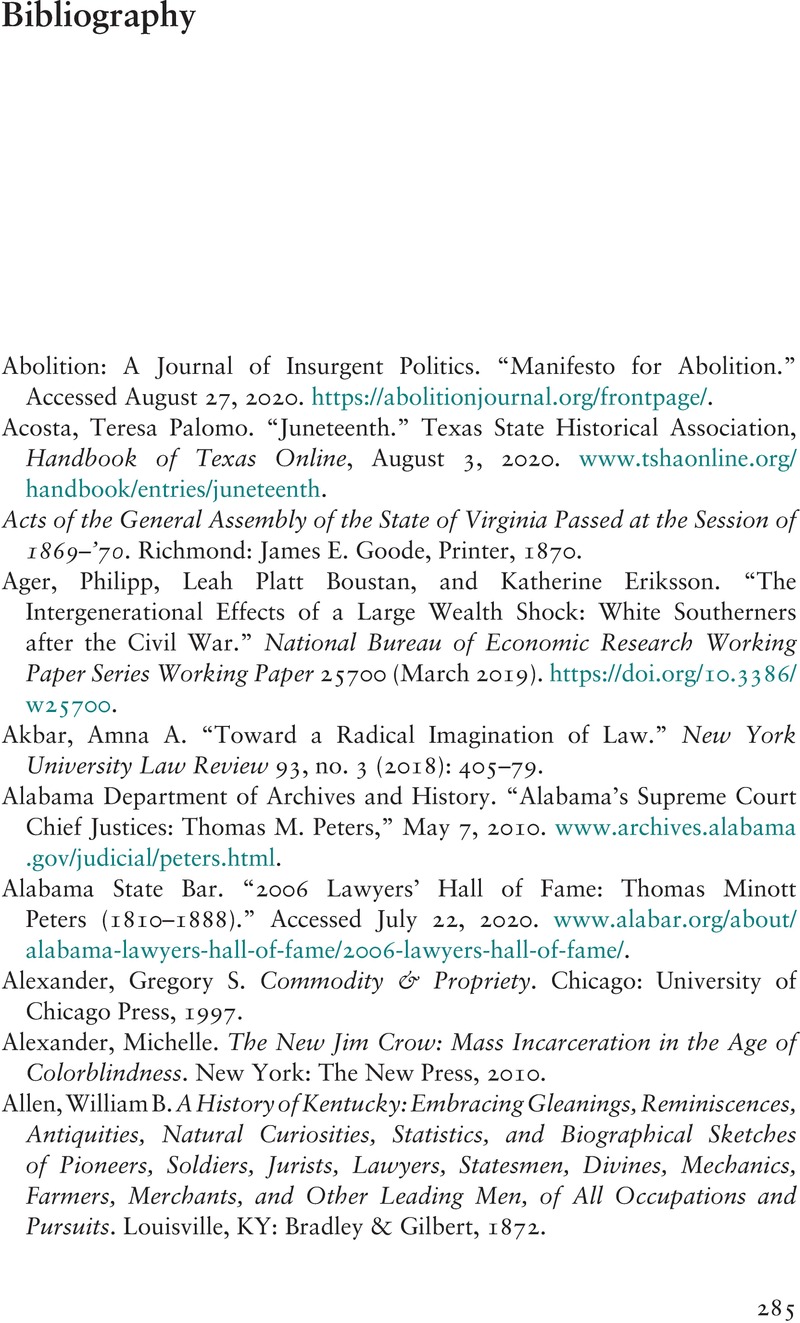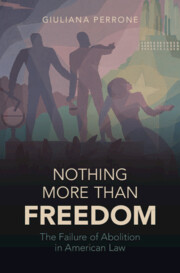Book contents
- Nothing More than Freedom
- Studies in Legal History
- Nothing More than Freedom
- Copyright page
- Dedication
- Contents
- Figures
- Acknowledgments
- Introduction
- 1 The Contract Controversy
- 2 Wreck and Ruin
- 3 By Force It Was Destroyed
- 4 Confederate Reckonings
- 5 Life after the Death of Slavery
- 6 Back into the Days of Slavery
- 7 The Grave Question
- 8 Final Failure
- Epilogue
- Bibliography
- Index
- References
Bibliography
Published online by Cambridge University Press: 04 May 2023
- Nothing More than Freedom
- Studies in Legal History
- Nothing More than Freedom
- Copyright page
- Dedication
- Contents
- Figures
- Acknowledgments
- Introduction
- 1 The Contract Controversy
- 2 Wreck and Ruin
- 3 By Force It Was Destroyed
- 4 Confederate Reckonings
- 5 Life after the Death of Slavery
- 6 Back into the Days of Slavery
- 7 The Grave Question
- 8 Final Failure
- Epilogue
- Bibliography
- Index
- References
Summary

- Type
- Chapter
- Information
- Nothing More than FreedomThe Failure of Abolition in American Law, pp. 285 - 306Publisher: Cambridge University PressPrint publication year: 2023



